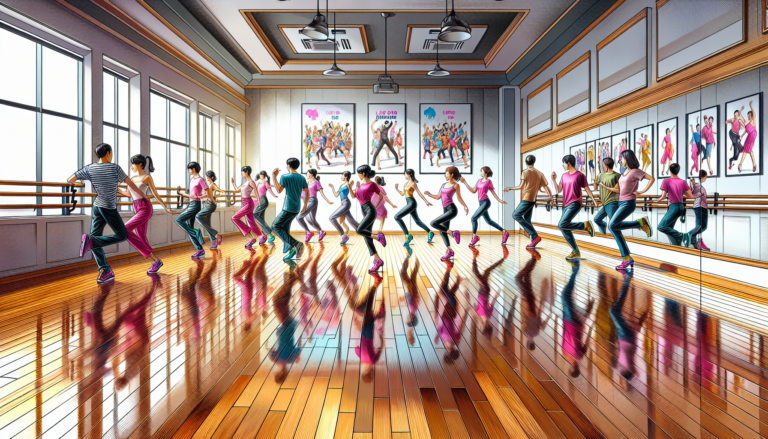Line dancing has become an increasingly popular activity for people of all ages, offering a fun and social way to get moving and enjoy music. Whether you’re a complete beginner or have some experience with dance, line dancing is an easy-to-learn style that anyone can enjoy. In this comprehensive guide, we’ll cover everything you need to know to get started with line dancing, including basic steps, popular dances, and helpful resources.
Introduction to Line Dance
What is Line Dance?
Line dance is a type of choreographed dance in which a group of people dance along to a repeating sequence of steps while arranged in one or more lines or rows. Unlike partner dances, participants in line dancing perform the steps in unison, facing the same direction. Line dances are typically set to country and western music, but the style has evolved to incorporate a wide range of musical genres.
A key appeal of line dancing is its social nature. Dancers don’t need a partner, making it easy for anyone to join in and make new friends on the dance floor. The repetitive steps also make line dance a great low-impact exercise option, especially for seniors.
History of Line Dancing
The origins of modern line dancing can be traced back to the 1970s and 1980s, when country and western bars started introducing dance lessons to attract more customers. Early line dances were heavily influenced by disco and often incorporated simple, repetitive steps that were easy for patrons to learn.
As line dancing grew in popularity throughout the 1980s and 1990s, choreographers began creating more complex dances set to a broader range of music. Country line dancing exploded into the mainstream in 1992 with the Billy Ray Cyrus hit “Achy Breaky Heart,” which inspired countless people to take up line dancing.
Today, line dancing remains a popular social activity enjoyed by millions worldwide, with new dances constantly being developed to contemporary country hits and pop songs.
Getting Started with Line Dancing
Basic Line Dance Steps
While there are countless line dances with unique steps and sequences, most are built on a foundation of basic moves. Mastering these fundamental steps will make it easier to learn new dances and feel confident on the dance floor. Some essential line dance steps include:
- Grapevine or Vine: A sideways travelling step where the feet weave front and back
- Jazz Box: A square-shaped step that starts with crossing one foot over the other
- Pivot Turn: A rotating step that turns the body 90 or 180 degrees
- Kick Ball Change: A syncopated step that involves a kick, stepping on the ball of the foot, then changing weight
- Rock Step: A back-and-forth step that involves shifting weight between the feet
Popular Beginner Line Dances
Some well-known line dances that are great for beginners include:
| Dance | Song |
|---|---|
| Cupid Shuffle | “Cupid Shuffle” by Cupid |
| Electric Slide | “Electric Boogie” by Marcia Griffiths |
| Boot Scootin’ Boogie | “Boot Scootin’ Boogie” by Brooks & Dunn |
| Watermelon Crawl | “Watermelon Crawl” by Tracy Byrd |
Tips for Learning Line Dance
As you start your line dance journey, keep these tips in mind:
- Start slow: Focus on mastering basic steps and rhythm before moving on to more complex dances.
- Listen to the music: Pay attention to the beat and phrasing to stay in sync with your fellow dancers.
- Watch others’ feet: If you get lost, sneak a peek at the steps of more experienced dancers around you.
- Don’t be afraid to make mistakes: Everyone starts as a beginner, so just relax and have fun!
Line Dance for Different Audiences
Line Dance for Seniors
Line dancing is an especially popular activity among older adults, thanks to its low-impact, easy-to-follow nature. Many senior centers and retirement communities offer line dance classes as a way for residents to socialize and stay active.
Dances like the “Electric Slide” and “Cupid Shuffle” feature simple, repetitive steps that are manageable for most fitness levels. Line dancing can improve balance, coordination, and cardiovascular health, making it a great form of exercise for seniors.
Line Dance for Kids
Line dancing isn’t just for grown-ups! Many schools and community centers offer kid-friendly line dance classes as a fun way to encourage physical activity and creativity.
Easy line dances set to popular songs, like “The Macarena” or “The Chicken Dance,” are a hit at birthday parties and school events. Learning line dancing can help children develop rhythm, spatial awareness, and teamwork skills while boosting their confidence.
Popular Line Dance Songs and Music
Top Line Dance Songs
Part of the fun of line dancing is grooving to great music. Some popular songs that have inspired line dances include:
- “Achy Breaky Heart” by Billy Ray Cyrus
- “5, 6, 7, 8” by Steps
- “Tush Push” by The Champs
- “Chattahoochee” by Alan Jackson
- “Copperhead Road” by Steve Earle
- “Good Time” by Alan Jackson
Creating Your Line Dance Playlist
To create the ultimate line dance playlist, start by including a mix of classic and contemporary country hits. Add in some crossover pop songs and a few oldies for variety.
Look for songs that have a strong, steady beat and a catchy, repetitive chorus to make the steps easier to remember. Aim for a tempo of around 100-160 beats per minute — too slow and the dance drags, too fast and it becomes hard to keep up!
Resources for Learning Line Dance
Online Line Dance Tutorials
Thanks to the internet, you can learn to line dance from the comfort of your own home. YouTube is a treasure trove of line dance videos, with tutorials for countless popular dances.
Search for the name of a specific dance you want to learn, like “Tush Push line dance” or simply browse “beginner line dance tutorials.” Many line dance instructors also have their own websites with videos and step breakdowns.
Line Dance Classes and Groups
If you prefer to learn in person, check your local community center or dance studio for line dance classes. Many country bars also offer free or low-cost lessons, especially on weeknights.
You can also search sites like MeetUp for line dance groups in your area. Joining a regular class or social dance group is a great way to hone your skills while widening your social circle.
Conclusion
Benefits of Line Dancing
From improving physical fitness to reducing stress and forging new friendships, line dancing offers a wide range of benefits. This fun, accessible dance style provides a full-body workout that boosts cardiovascular health, coordination, and flexibility.
The social aspect of line dancing is also a major draw. Dancing together fosters a sense of community and belonging, which can be especially valuable for seniors and those who are new to an area. Learning new dances and steps is also a great way to challenge your brain and keep your mind sharp.
Encouragement to Start Line Dancing
If you’ve been considering giving line dancing a try, there’s no better time to start than now. Remember, everyone was once a beginner, so don’t worry about having two left feet or not knowing the steps.
Line dancing is all about having fun and enjoying the music, not perfecting every move. So round up a few friends, put on your dancing shoes, and get ready to kick up your heels! With a little practice and a positive attitude, you’ll be boot scootin’ with the best of them in no time.






